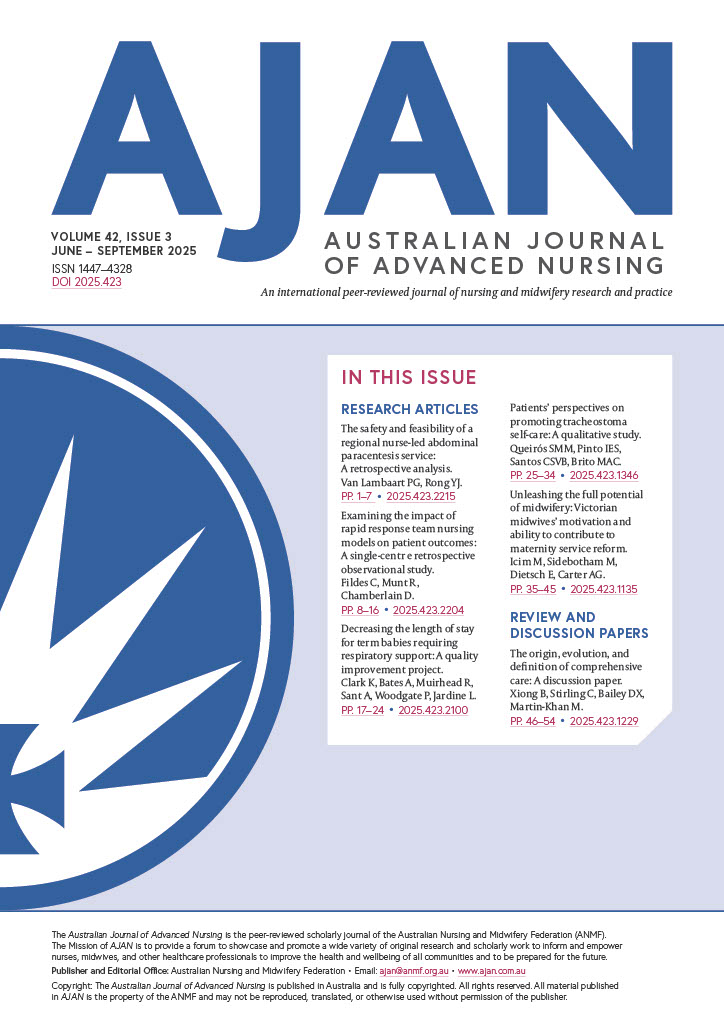Unleashing the full potential of midwifery: Victorian midwives’ motivation and ability to contribute to maternity service reform
Main Article Content
Keywords
Maternity Service Reform, Midwifery, Continuity of Midwifery Care, Caseload Midwifery, Maternity Health Services
Abstract
Objective: To explore the motivation and ability of midwives in Victoria to contribute to maternity service reform recommendations, specifically expansion and promotion of midwifery continuity of care models.
Background: Since the inception of the National Maternity Services Plan in Australia in 2010, midwifery continuity of care has been a key priority area for maternity service reform. It is known that midwifery continuity of care models improves outcomes for mothers and babies, and that midwives’ value and support working in these models. What is not known, is the motivating factors and ability of midwives in Victoria to contribute to Maternity Services Reform, through promotion of the initiation and expansion of midwifery continuity models.
Study design and methods: A cross-sectional, qualitative descriptive design was used. Ten midwives participated, resulting in six semi-structured individual interviews and one focus group of four midwives. Interview and focus group data was analysed using thematic analysis.
Results: Midwives in this study were generally supportive of maternity service reform, especially midwifery continuity of care models, but many felt powerless to contribute to reform agenda. Midwives described limited knowledge of maternity service reform and lack of exposure to midwifery continuity of care models. Systemic issues like medical dominance and lack of institutional support further hindered midwives' ability to enact change. Despite these challenges, many midwives expressed a desire to work to their full scope, suggesting that with adequate education, mentorship, and leadership, they could become more active agents of reform.
Conclusion: Midwives within this study are motivated to contribute to Maternity Services Reform and support greater access to midwifery continuity of care models, however, the majority felt unable to make an appreciable contribution to the expansion and promotion of these models. Strategies identified to improve midwives' contribution to reform included: education on transforming maternity care, having access to supportive midwifery leaders, successful interdisciplinary collaboration, and fostering a strong midwifery professional identity.
Implications for research, policy, and practice: Participants in this study were motivated to contribute to maternity service reform and practice in midwifery continuity of care models. However, there were many aspects of their role as a midwife and the current maternity care system that did not enable them to contribute. Recommendations to improve midwives’ ability to contribute include education programs that focus on continuity of care experiences, successful and respectful interdisciplinary collaboration, identifying midwifery leaders with a strong vision for reform agenda, and strengthening midwifery as a profession.

